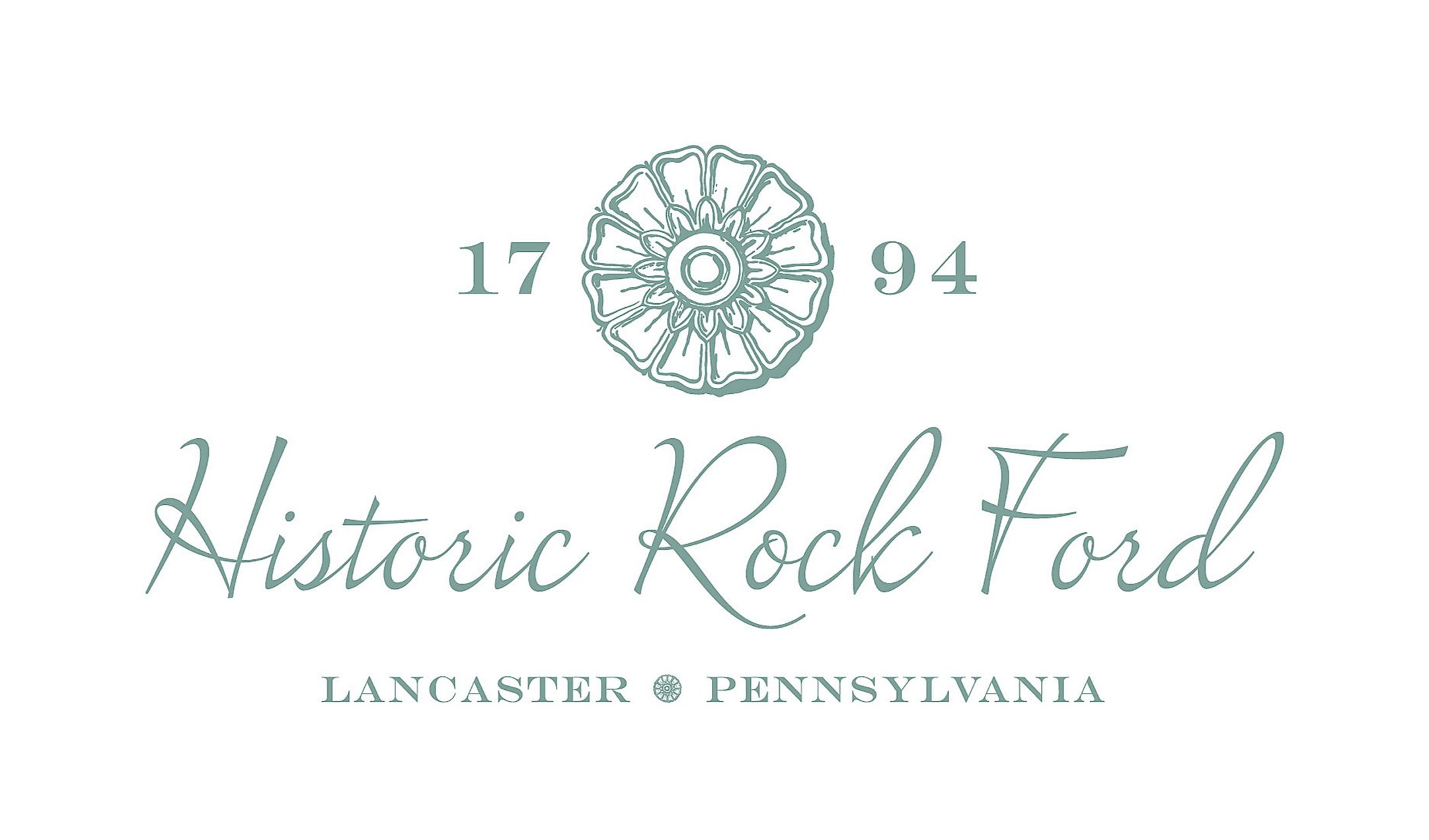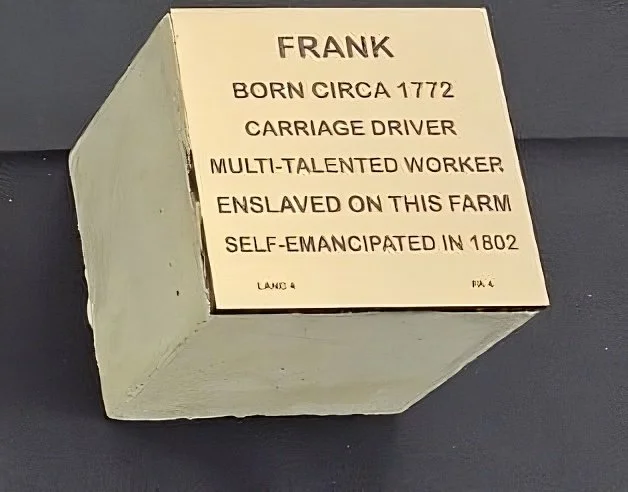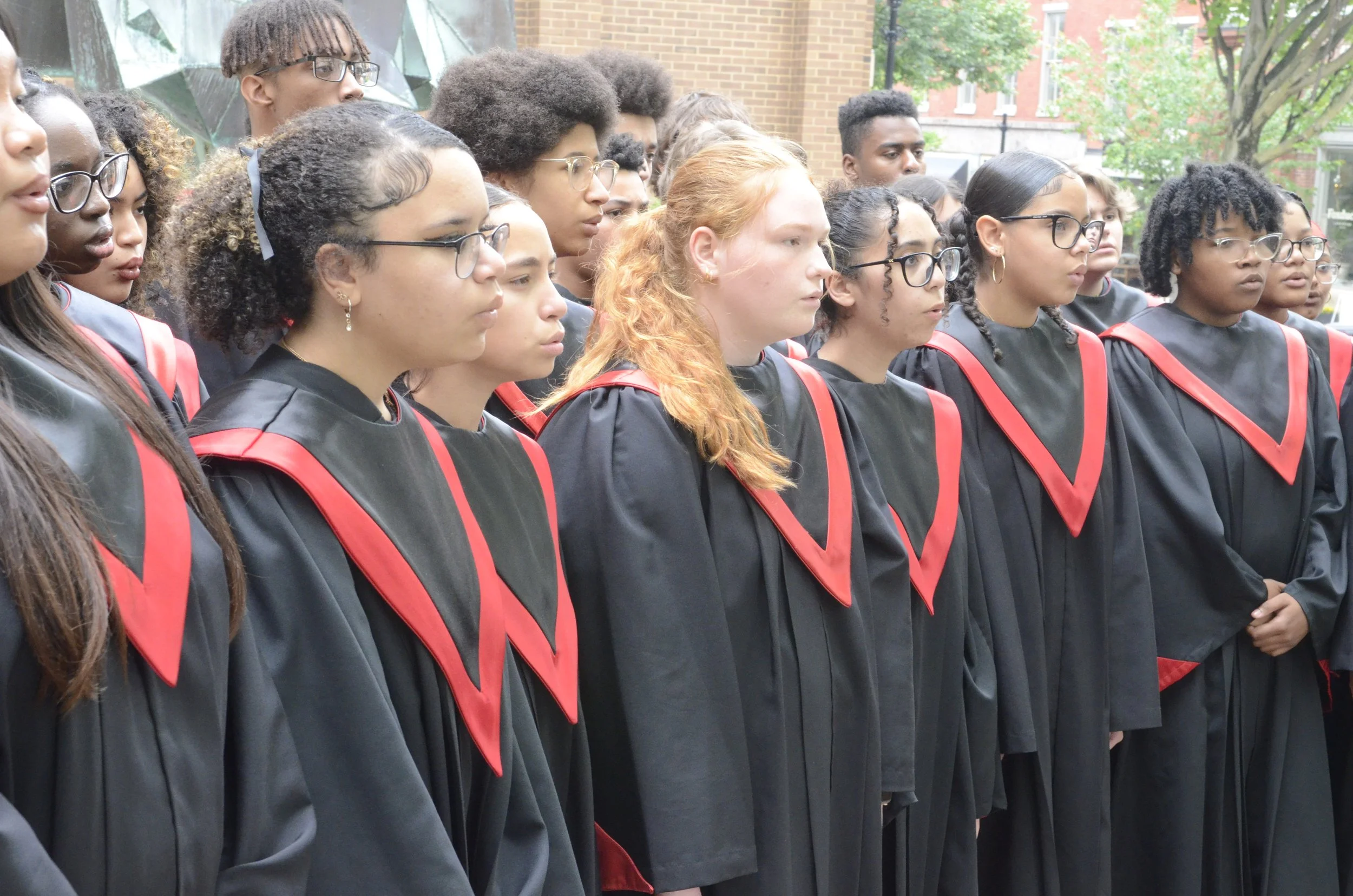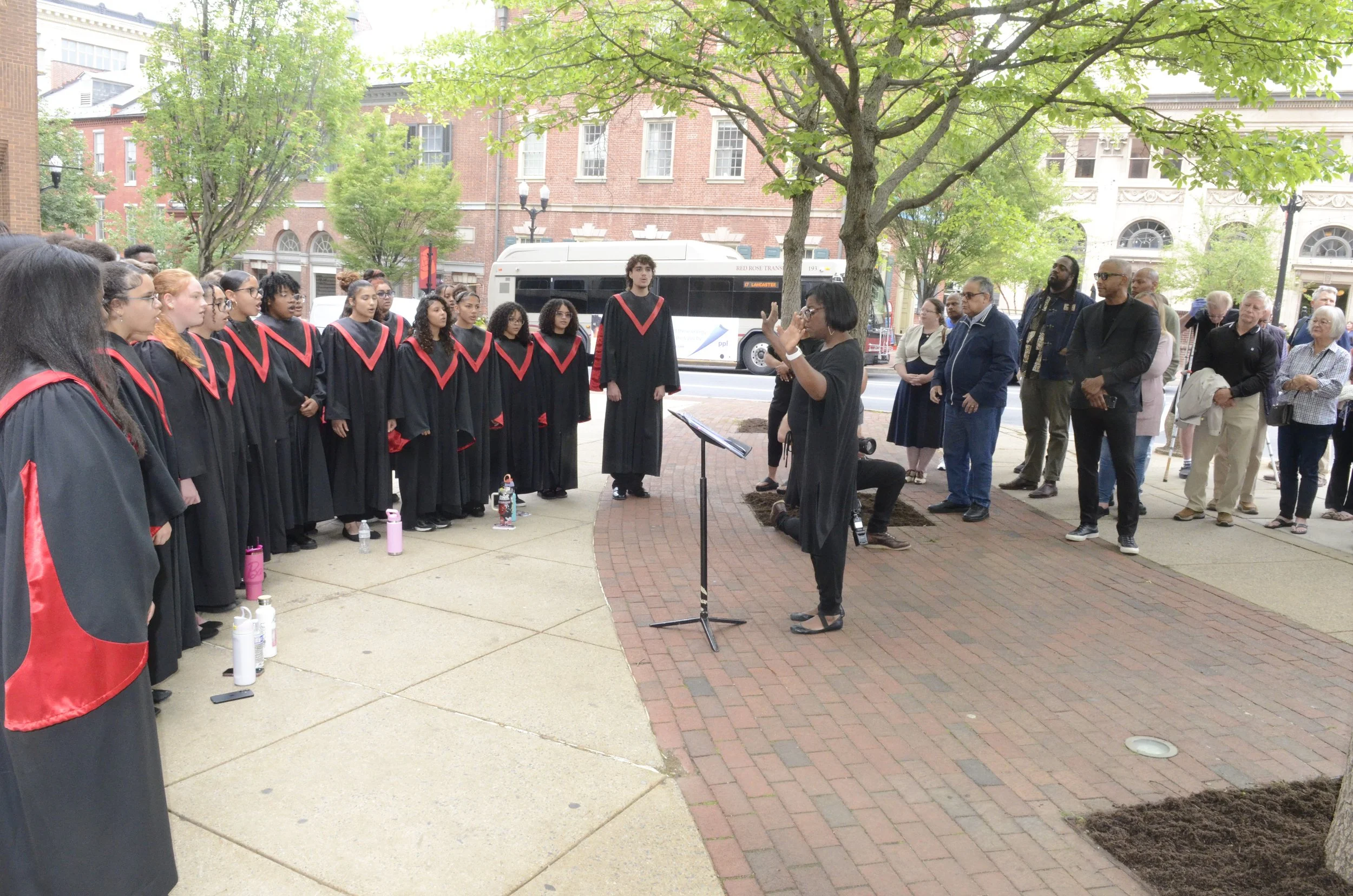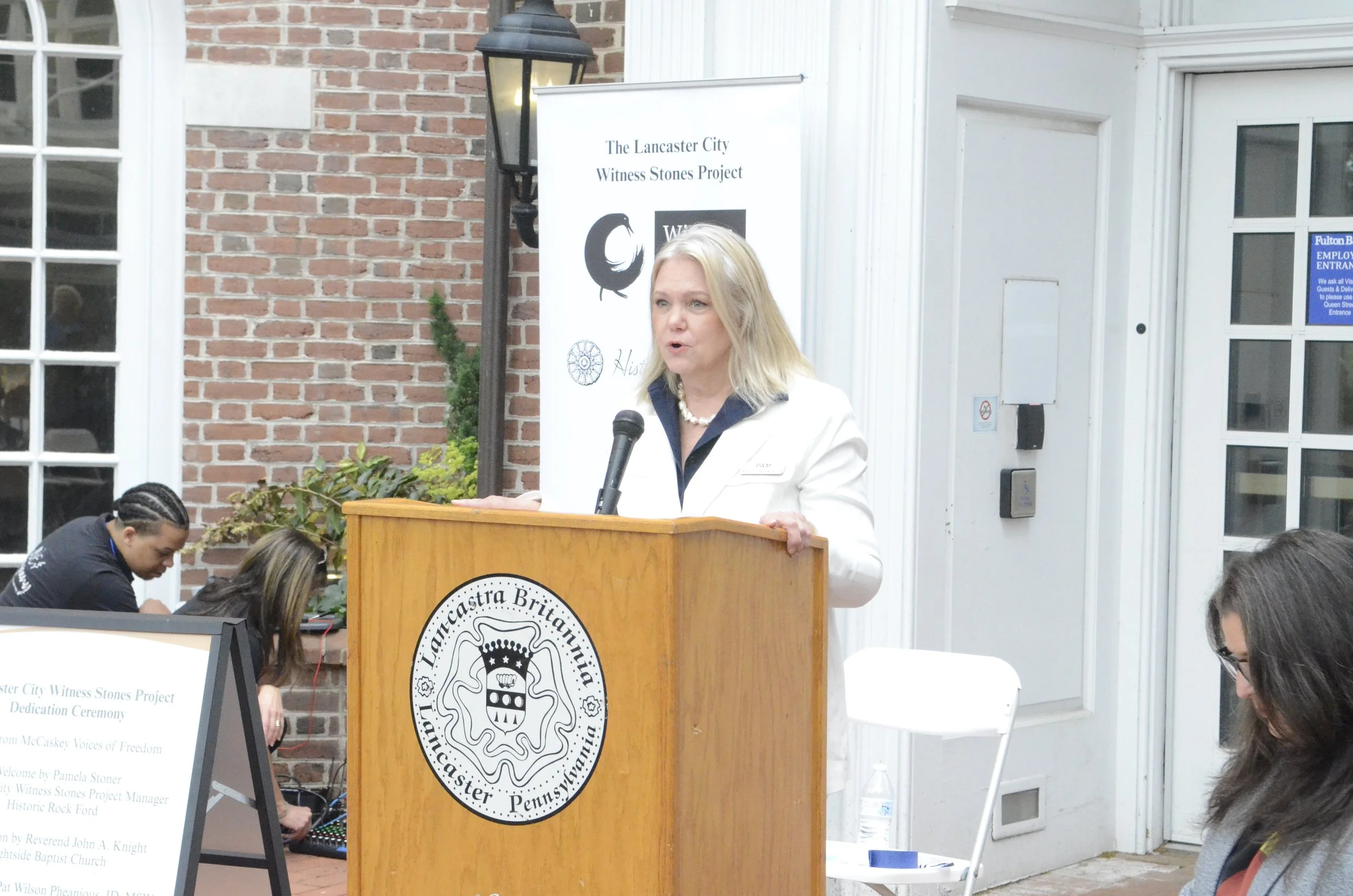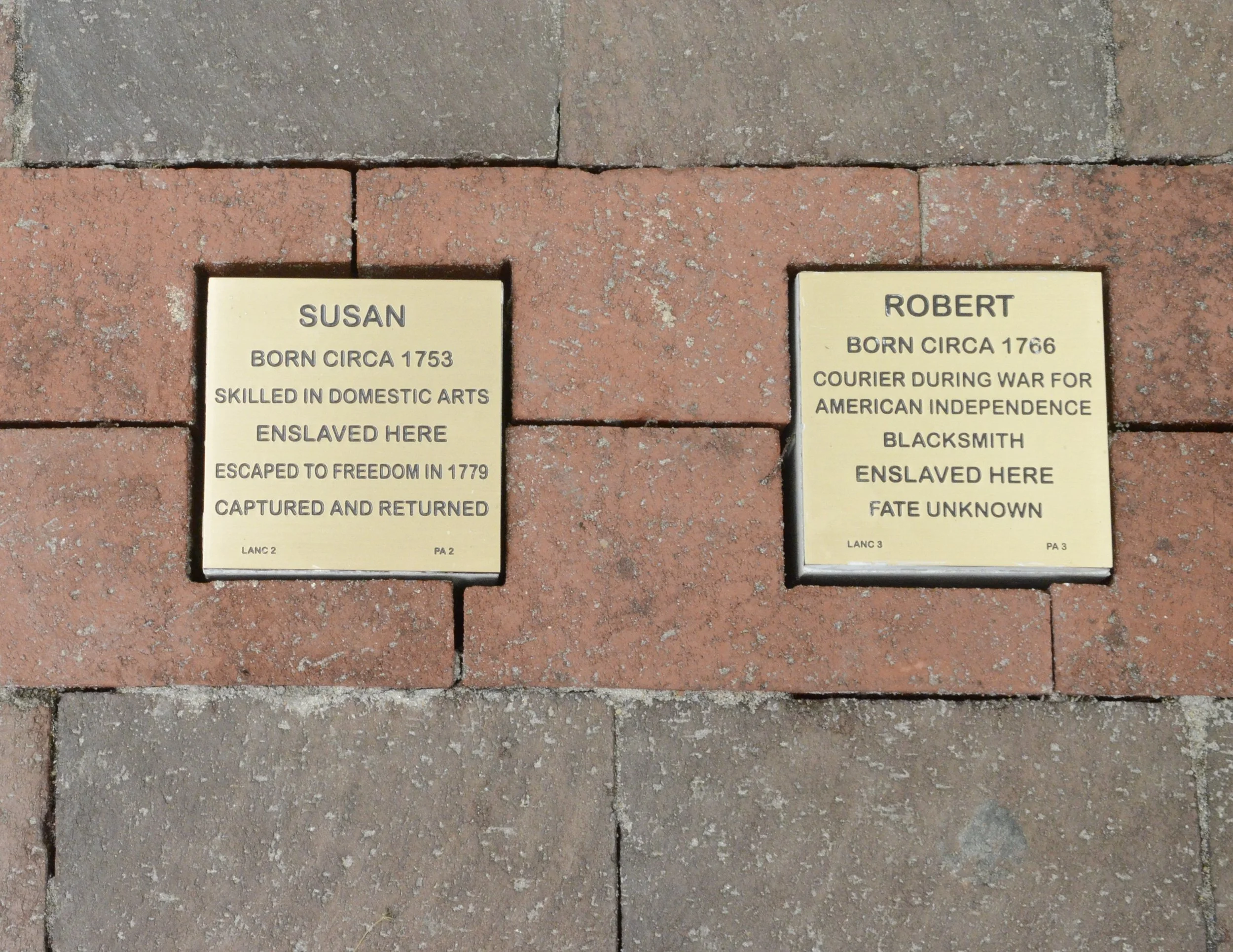Lancaster City Witness Stones Project
Example of a Witness Stone. This particular stone will be placed in Summer 2025 at Historic Rock Ford
The Lancaster City Witness Stones Project is a local, education-based collaboration of the African American Historical Society of South Central Pennsylvania (AAHSSCPA), Historic Rock Ford, and the School District of Lancaster (SDoL). This project is part of the Witness Stones Project, Inc., a regional non-profit organization whose mission is to expand knowledge and understanding of Northern slavery by partnering with individual communities like Lancaster to restore the history and honor the humanity of the adults and children who were enslaved there. The project hinges upon the participation of local students, teachers, researchers, and historians.
Historic Rock Ford, a museum located within Lancaster County Park, was the home of Edward Hand, a Revolutionary War General who enslaved people of African descent. The Lancaster City Witness Stones Project began with Rock Ford’s search for a different approach to educating the public about Robert, Bet, and Susan, the people Hand enslaved at his home in the city, and Frank at Rock Ford.
The Witness Stones Project, Inc. was founded in Guilford, Connecticut, in 2017 by an 8th-grade teacher who wanted to develop materials for teaching his students about slavery in their town. The memorialization component is inspired by the Stolperstein or Stumbling Stones Project in Europe, which memorializes the names and residence locations of Jews murdered in the Holocaust. Over 70,000 Stumbling Stones have been installed in 24 European countries. The Stolperstein and Witness Stones Projects are dedicated to shining a light on difficult history so that future generations may benefit from the knowledge. Learn more about the Witness Stones Project in Connecticut and its impact here.
The Project in Lancaster
A historic map of Lancaster City . The red dots indicate locations where enslaved people lived and labored.
The project is planned for a minimum of three years. Approximately 25 stones will be placed each year at locations within the central historic district. The stones are 4x4" squares capped with an engraved brass plate. In most cases, they will be embedded in the brick verge or strip between the sidewalk and the street and level with the surrounding surfaces. The City of Lancaster will authorize the location and manner of installation to ensure compliance with all public safety regulations. No stones will be placed where adjacent property owners do not want them.
An advisory council of individuals from the community guides the project in Lancaster. A list of those currently on the advisory council can be found here.
Currently, the first enslaved individuals to be included in the project are those enslaved by General Edward Hand: Robert, Bet, Susan, and Frank. Students at McCaskey High School, under the direction of Dr. Todd Mealy, are currently engaging with primary source documents to learn more about these individuals, along with their lives and experiences. If you would like to know more about Robert, Bet, Susan, and Frank more information can be found here. The first stones were dedicated in a ceremony on May 27, 2025
Click Here to read the speeches made by students at the Dedication Ceremony.
Click Here to read the stories of those to whom the stones are dedicated.
Photos from the First Lancaster City Witness Stones Dedication Ceremony, May 27, 2025
Project Support
The African American Historical Society of South Central Pennsylvania has provided a Letter of Support for the project.
The Lancaster City Witness Stones Project is currently supported financially by:
Lancaster County Community Foundation
The Steinman Foundation
High Foundation
Walters/Unitarian Universalist Church Trust
Willow Valley Communities
Gibbel Kraybill and Hess, LLP., Attorneys and Counselors at Law
Susan C. Broomell, Lindsley Development Consulting
Thomas G. Englert
Frequently Asked Questions
Two of the Witness Stones as they appear in the ground. These are located on the SW corner of Penn’s Square in downtown Lancaster.
-
As observed in Europe with the Stolperstine or Stumbling Stones Project, placing the markers in the ground makes them virtually impossible to miss. More importantly, bowing one's head to read the name of an enslaved man, woman, or child acknowledges that individual in an extraordinary way.
-
Some markers related to the colonial period and the republic's early years were installed almost one hundred years ago. These markers tend to focus on a version of American history that ignores the existence of enslaved people living and working in the city. Other more recent additions, like those installed by the African American Walking Tour, a project of the AAHSSCPA, are up-to-date and very informative. The Lancaster City Witness Stones Project will function more granularly by installing a small marker, or "stone," for each enslaved person identified by research and placing it in the ground at or near where they lived and worked.
-
The Lancaster City Witness Stones initiative is intended to complement the work of other local organizations. The African American Historical Society of South Central PA is the authority on this subject, and Historic Rock Ford has sought their help over the years. They are critical partners in the Witness Stones Project. Representatives of LancasterHistory, the organization responsible for the Thaddeus Stevens and Lydia Hamilton Smith Center in downtown Lancaster, are contributing to the project as advisory committee members. The Witness Stones Project, however, is singularly focused on the individual enslaved people living and working in Lancaster Borough (City) from its earliest settlement until the last person was legally freed from ownership by a city resident. It is contributing to the first chapter of African American History in Lancaster.
-
Lancaster based organizations like the AAHSSCPA and local scholars know this information best and have provided research and support. The Witness Stones, Inc. organization provides a road-tested framework that has helped to streamline our efforts. Partnering with a regional organization also allow us to contribute to the larger story of northern slavery by joining a growing list of other communities that have adopted the program. Our project relies heavily upon the support and input of local experts and is a collaboration of local organizations dedicated to this work. The Witness Stones Project organization has partnered with communities in Connecticut, Massachusetts, Rhode Island, New York, and New Jersey. Lancaster will be their first partnership in Pennsylvania.
The Witness Stones Project is a member of the Northeast Slavery Records Collaborative. The Collaborative develops and maintains the online searchable Northeast Slavery Records Index that identifies records of enslavement, including those that identify individual enslaved persons and enslavers. Lancaster-based students and historians will be contributing information that will help future scholars better understand the breadth and nature of northern slavery and the underrepresented population of men, women, and children whose forced labor contributed to the foundation of our communities.
-
Annual marker maintenance and repair are essential to the long-term impact of this project. Funds needed for the upkeep of the stones will be accounted for separately and provided to participating students for annual monitoring and care of the stones that previous classes have installed. Property owners adjacent to sidewalks with Witness Stones will also be encouraged to adopt and care for them. Should the school partner no longer be able to commit to this aspect of the project and no other organization takes control of the LCWSP, Historic Rock Ford will be responsible for hiring or recruiting volunteers to do the work.
